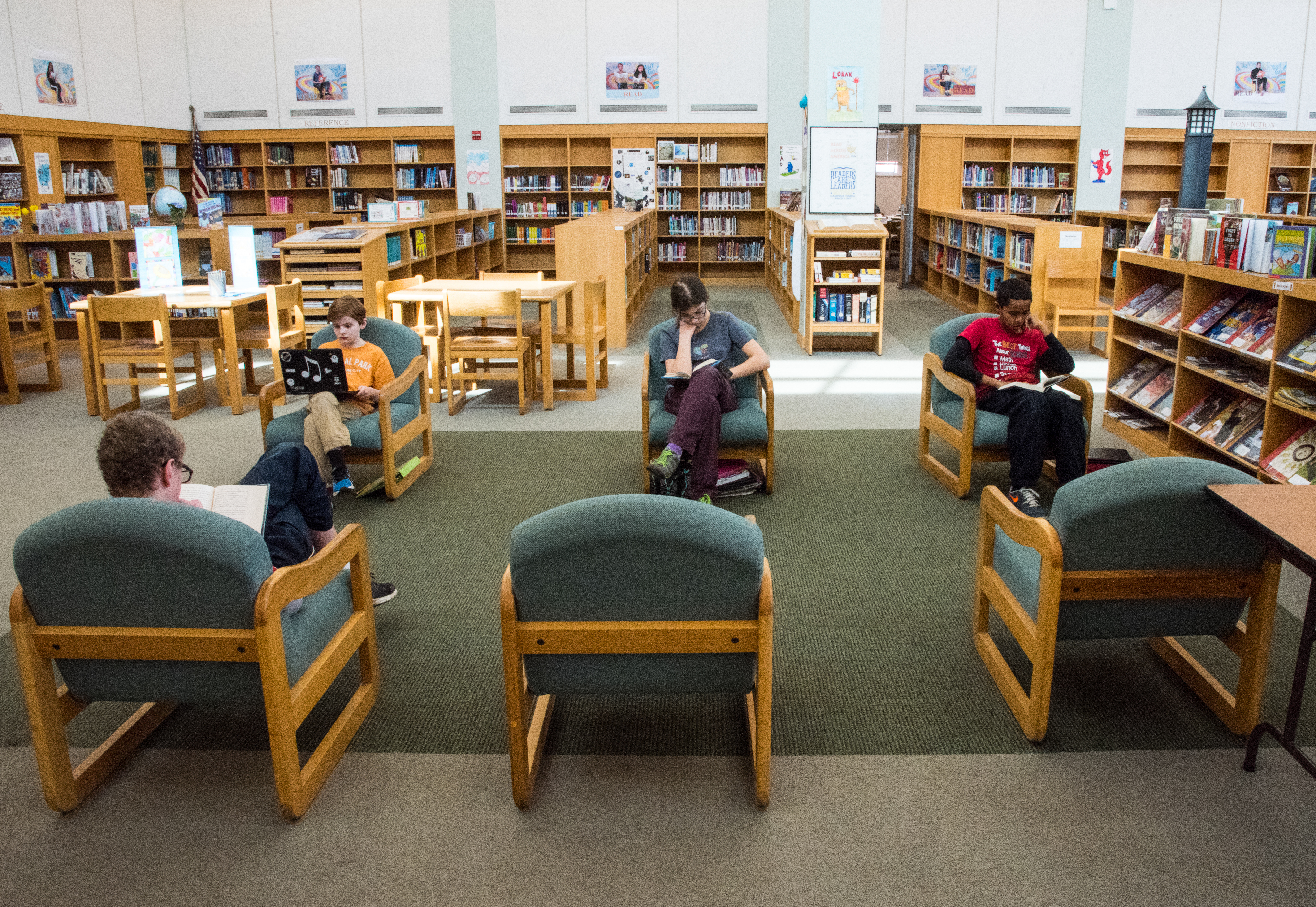In classrooms throughout ACPS, literacy skills are taught and learned in varied, creative and engaging ways. Our teachers encourage student interaction, reading and writing in all content areas, student performances and presentations, and higher-level thinking skills, such as comparison, analysis, synthesis, evaluation, and creative self-expression.
In order for today’s students to be truly literate, they must:
- Be able to comprehend complex text
- Write for a variety of purposes
- Listen actively
- Speak fluently and effectively to a variety of audiences
- Be wise consumers of technology and electronic media
With our diverse student population, we emphasize reading comprehension and improving the ability of all learners to analyze and interpret a variety of texts, including fiction and informational selections. Students compare readings and discover themes, patterns and recurring ideas. Teacher-driven mini-lessons on key skills along with guided reading and writing, help students’ grow their reading skills and their ability to transfer those skills to other areas.
The writing process has also evolved beyond the bounds of language arts classrooms to all content areas. From the time students enter kindergarten, they engage in opportunities for in-class and out-of-class writing, crossing all instructional and subject areas. Students learn to think like writers from brainstorming ideas to drafting, receiving input from peers and teachers, revising, submitting, and publishing their work products in classroom displays and collections. Helping students to elaborate on their ideas and present effective supporting evidence is a major emphasis in all classrooms.
Grammar and usage rules are taught as an integral part of the revision and editing process. We emphasize mastery of parallel structure, correct verb tense, correct use of punctuation, and word choice and sentence variety, including the effective use of transitional phrases.
Speaking and listening are important in literacy development. When students interact with peers and teachers to share and debate ideas, they discover what they are thinking and learning—as well as areas in which they may need clarification and support. In ACPS literacy classrooms, students engage in ongoing formal interactions (e.g., think-pair-share) and more formal interactions, including literature circles, reader’s theatre, seminars, debates, simulations, presentations and performances.
Today’s students need to be wise consumers and evaluators of electronic media. Blended learning—in which students fluidly and easily use technology as a tool and process for learning—encourages students to become users as well as critics and evaluators of online information. We encourage students to consider the sources of evidence presented in a claim or argument—and to search for multiple forms of evidence to back up their ideas, claims and assertions.
What does it look like in our classrooms? Our students:
- Have extensive opportunities to speak, listen actively, summarize, paraphrase and to interact with peers.
- Are extensively engaged in text analysis and criticism, making relatable connections to themselves, other texts and to the real world.
- Express themselves through formal and informal writing using the stages of the writing process.
- Are able to apply, analyze, synthesize and interpret questions that are open-ended and engaging.
- Learn how to monitor their own progress towards achieving learning goals.
- Express their ideas and insights through writings, artistic creations, and performances and presentations.
- Discuss and debate ideas and perspectives as a class.
- Have their works published, displayed and acknowledged.
This is the third of three posts on Goal 1 of the ACPS 2020 Strategic Plan, Academic Excellence and Educational Equity. The first shared about the implementation of Professional Learning Communities. The second post highlighted our focus on achievement in math. The results achieved in year two of the other five goals will be presented to the School Board over the next two months.
ACPS 2020 is built upon six goals: Academic Excellence and Educational Equity, Family and Community Engagement, An Exemplary Staff, Facilities and the Learning Environment, Health and Wellness, Effective and Efficient Operations.

